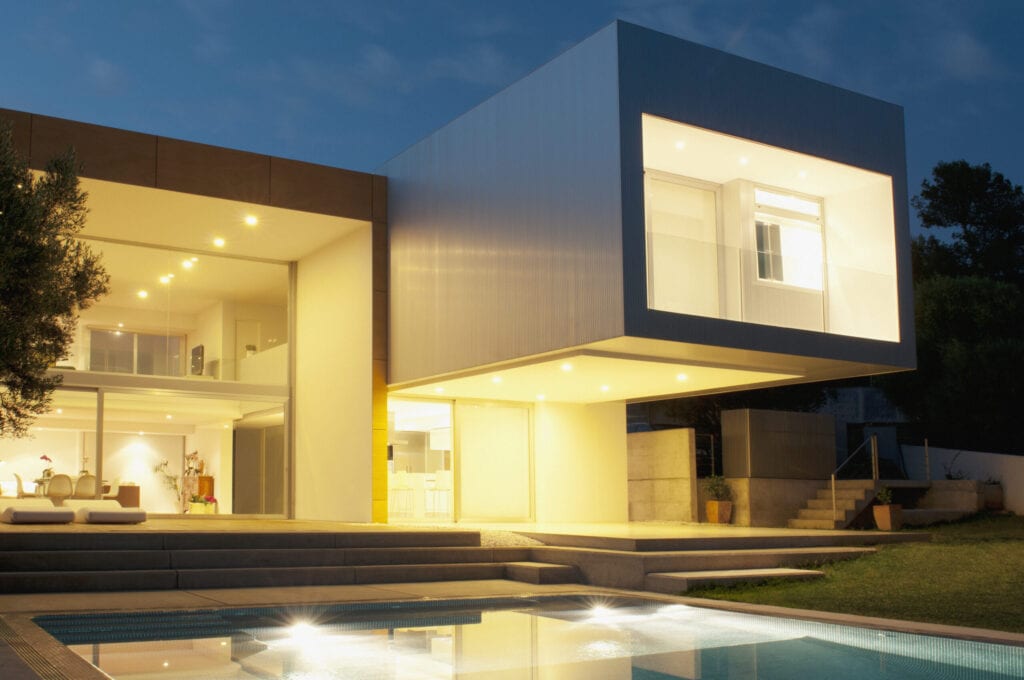Modern architecture is a style of architecture that arose in Europe and the United States in the 1920s. At the beginning of the century, it began as a response by architects to rapid technological advancements and increased urbanization. The utilization of innovative materials and construction technology is a hallmark of modern architecture. Simple shapes, such as rectangles, are contained by flat opaque, solid, or clear glass walls in modern architecture. The new materials – glass and steel – altered the appearance of buildings, the inside-outside experience, and construction time and method.
To view characteristics of balance, composition, and inside-outside interactions, watch Iconic Houses. Skyscrapers, a new building type created by steel and glass engineering, changed skylines around the world and pushed live in the sky to new heights! Instead of being regressive, backward-looking, or stylistic, modern architecture is thought to be progressive. The assembly of standard components and new transit technology, particularly automobiles, ships, and aircraft, generated visions of a hopeful, heroic, and progressive era. Volume, balance, or symmetry instead of symmetry, and the elimination of adornment or applied embellishment are all features of modern architecture.

The modern movement lasted approximately 60 years and encompassed various sub-styles. It can be difficult to establish a specific starting point in this manner. Some people associate the style with transitional architecture such as the Art Deco and Arts & Crafts movements. Others saw those previous designs as models for more “pure” mid-century modern architects.
With the idea that form should follow function, modern design was born. The architect Louis Sullivan, who constructed buildings for the 1893 Chicago World’s Fair, was the inspiration for this concept. For modern architects, this slogan has become a guiding principle.
Frank Lloyd Wright, Staatliches Bauhaus, Ludwig Mies van der Rohe, and Le Corbusier are some of the most well-known contemporary architects.
Distinguishing qualities of modern architecture

There are various distinguishing qualities of modern architecture because there are so many styles. These are some of the most typical, broad key characteristics that can be found in a variety of forms.
• Simple, uncluttered lines. These lines have no further adornment and have a smooth, uniform feel.
• Extensive roof overhangs Several modern residences include enormous roof overhangs and low, horizontal constructions.
• Glass walls and huge windows There is a lot of glass in the interior, which allows a lot of natural light in.
• Floorplans that are open and well-defined. Because modern architecture emphasizes form over function, architects wanted to incorporate big, open floorplans with flowing eating and living areas.
• Building materials that are both modern and traditional. Steel, concrete blocks, iron, and glass are some of the most prevalent materials used in modern homes. Wood, brick, and stone, which are more common building materials, were employed in more basic ways to show off their natural beauty.
• A connection to the surrounding environment. Building sites and how buildings would interact with the natural surroundings surrounding them were given a lot of thought.
• asymmetrical Designs. Large, smooth outlines and asymmetrical compositions that were cleanly planed and lacking any further adornment were popular among modern architects.
Modern architecture is characterized by the development of adornment from the structure and theme of the building, as well as the reduction of form. It’s a catch-all term for a broad movement having a wide range of definitions and scope. Early modern architecture, in a broad sense, began at the turn of the twentieth century with attempts to combine the principles underpinning architectural design with rapid technological innovation and societal modernization. It would manifest itself as a plethora of movements, schools of design, and architectural styles, some in conflict with one another and frequently defying categorization.
Steel, plate glass, and mass-produced components were all developed and popularised throughout the Industrial Revolution. These new materials opened up a whole new universe of structural frames with clean lines and gleaming or matte finishes. “Decoration is a crime,” was a popular motto in the early days of contemporary architecture. Communists in Eastern Europe opposed the West’s decadent habits, and modernism became more bureaucratic, solemn, and colossal as a result.
Modernist architects used the idea of reducing structures to pure shapes, obliterating historical references and adornment in favor of functionalist elements. Rather than disguising steel beams and concrete surfaces beneath beautiful shapes, buildings exposed their functional and structural aspects.

